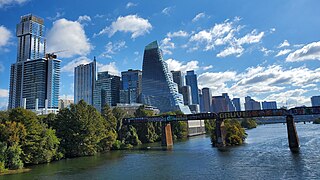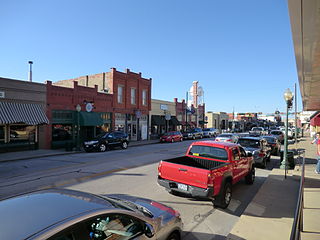The Lone Star State, Texas, stands as a testament to the diverse landscapes and cultures of America. Encompassing bustling metropolises like Houston and Dallas, alongside the historical charm of San Antonio and the serene Hill Country, Texas promises a unique blend of experiences. Its vast terrains span from the sandy shores of the Gulf Coast to the rugged mountain ranges, making it a haven for both urban explorers and nature enthusiasts. With a rich tapestry of history, culture, and culinary delights, Texas beckons travelers to partake in its multifaceted beauty.
Remember, Texas is vast. Plan your routes well in advance to maximize your exploration time and reduce long drives.
Indulge in Texas barbecue and Tex-Mex cuisine, two culinary staples that define the state’s rich food culture.
Texas: the lone star state
| Capital | Austin |
| Time in Texas | GMT-6 |
| Language spoken | English |
| Population | 29,183,290 (source: United Nations) |
| Religion | Christianity (77.8%) Irreligion (18%) Others (4.2%) |
| Currency | United States Dollar (USD) |
| Airports | Dallas/Fort Worth International Airport Houston George Bush Intercontinental Airport Austin-Bergstrom International Airport San Antonio International Airport |
The vast expanse of Texas, affectionately known as the Lone Star State, boasts a rich tapestry of history and diverse cultures. From its origins as Spanish territory to its iconic role in the American West, Texas has always been a land of pioneers, cowboys, and innovators. Its sprawling landscapes, ranging from the dusty plains of the Panhandle to the lush pine forests of East Texas, have witnessed the unfolding of many pivotal moments in U.S. history.
For the discerning tourist, Texas offers a unique blend of experiences. From the hallowed grounds of the Alamo in San Antonio to the cosmopolitan vibes of Dallas and Houston, there is a myriad of attractions that tell tales of Texan pride, resilience, and tradition. The state’s musical heritage, particularly in cities like Austin, draws countless enthusiasts eager to experience the soulful strains of country, blues, and rock.
Moreover, Texas’s culinary delights, notably its world-famous barbecues and Tex-Mex dishes, promise an epicurean journey like no other. The state’s Gulf Coast offers pristine beaches, while the rugged beauty of Big Bend National Park beckons to those in search of adventure. Every corner of Texas offers a distinct experience, encapsulating the vastness and diversity that the state embodies.
Where is Texas located?
Located in the south-central part of the United States, Texas shares its southern border with Mexico, and is bordered by New Mexico to the west, Oklahoma to the north, Arkansas to the northeast, and Louisiana to the east.
What is Texas famous for?
Texas is renowned for its unique blend of Mexican and American cultures, iconic historical sites like the Alamo, world-famous barbecues, vibrant music scenes, vast landscapes, and its distinct cowboy heritage.
History
Prehistoric Era: Early Inhabitants
Long before the advent of written history, various Native American tribes called Texas home. From the Caddo in the east to the Comanche in central and northern Texas, these early inhabitants left behind artifacts, burial mounds, and pictographs as silent witnesses to their legacy.
1519 – 1685: European Exploration
The Spanish explorer Álvar Núñez Cabeza de Vaca was among the first Europeans to document his travels in Texas in the early 16th century. Over the next century, numerous Spanish missions were established, serving both as religious centers and as Spain’s claim to the territory against potential French encroachment.
1685 – 1821: Colonial Rule and Spanish Missions
Throughout the late 17th and 18th centuries, Texas was primarily under Spanish control. The mission system expanded, and places like San Antonio began as mission settlements. However, the Spanish presence was continually challenged by native tribes, French explorers, and other colonial powers.
1821 – 1836: Mexican Texas and the Road to Independence
After Mexico gained independence from Spain in 1821, Texas became a part of the new nation. Mexico, keen on settling its northern territories, offered land grants to settlers, leading to a significant influx of Anglo-Americans. Tensions between these settlers and the Mexican government, especially over issues like slavery and local governance, eventually led to the Texas Revolution. The iconic Battle of the Alamo and the subsequent victory at San Jacinto in 1836 culminated in Texas declaring its independence as the Republic of Texas.
1836 – 1845: Republic of Texas
For nearly a decade, Texas existed as an independent republic. It formed its own government, defended its borders, and conducted foreign relations. However, annexation to the United States was a hotly debated topic, both within Texas and the U.S.
1845 – 1861: Statehood and Antebellum Period
In 1845, Texas became the 28th state of the United States. The annexation sparked tensions with Mexico, leading to the U.S.-Mexican War. As a new state, Texas experienced rapid economic growth but was deeply embroiled in the national tensions over slavery.
1861 – 1865: Civil War and Reconstruction
During the Civil War, Texas seceded from the Union and joined the Confederate States of America. Though few battles occurred in Texas, the state provided valuable supplies to the Confederacy. Post-war, during Reconstruction, Texas faced political upheaval and societal challenges as it was reintegrated into the Union.
20th Century: Economic Boom and Modernization
The discovery of oil at Spindletop in 1901 transformed Texas. The subsequent oil boom propelled it into an era of unprecedented economic growth. Throughout the 20th century, Texas diversified its economy, saw the rise of major urban centers, and became a hub for industries ranging from energy to technology.
21st Century: Contemporary Texas
Today, Texas is a dynamic blend of tradition and innovation. Its cultural heritage, combined with its role as a leader in various industries, positions Texas as a significant player on both the national and global stages. From its bustling cities to its vast landscapes, Texas remains a state of diverse people, cultures, and histories.
Visit Texas
What to see and do in Texas
When visiting Texas, there are many attractions and activities to explore. Some of the top things to see and do include:
- Exploring the vibrant city of Houston, with its world-class museums, theaters, and dining scene
- Visiting the historic Alamo in San Antonio and strolling along the picturesque River Walk
- Experiencing the unique blend of cultures and cuisines in Austin, the state capital
- Enjoying the beautiful beaches of the Gulf Coast, such as South Padre Island
- Exploring the natural wonders of Big Bend National Park and Palo Duro Canyon State Park
- Going on a ranching and cowboy adventure in the Texas Hill Country
- Attending a live music performance in the “Live Music Capital of the World,” Austin
- Participating in the world-famous rodeo events and livestock shows in Fort Worth
Short tile about events in Texas
Throughout the year, Texas hosts various events and festivals that showcase its rich culture and traditions. Some notable events include:
- The Houston Livestock Show and Rodeo, held in March, featuring rodeo competitions, livestock shows, and live performances by popular artists.
- The South by Southwest (SXSW) Conference and Festivals, held in Austin in March, which celebrates music, film, and emerging technologies.
- The State Fair of Texas, held in Dallas in September and October, featuring amusement rides, live music, livestock exhibitions, and the famous fried food creations.
- The Fiesta San Antonio, held in April, a city-wide celebration of San Antonio’s diverse cultures with parades, parties, and food events.
Best time to visit Texas
The best time to visit Texas depends on personal preferences and the desired activities. Spring (March to May) and fall (September to November) are generally pleasant with mild temperatures and less crowds. This is a great time for outdoor activities and exploring the cities. Summer (June to August) can be hot, especially in central and southern parts of the state, but it offers opportunities for beach vacations and water sports along the Gulf Coast. Winter (December to February) is mild in most parts of Texas, making it an ideal time for enjoying indoor attractions, like museums and galleries.
Is Texas worth visiting?
Texas is definitely worth visiting for its rich history, diverse culture, and numerous attractions. The state offers a wide range of experiences, from exploring cosmopolitan cities to enjoying the natural beauty of its parks and coastlines. Texas boasts world-class museums, vibrant music scenes, and a renowned culinary scene. It is also home to iconic landmarks such as the Alamo and the Space Center Houston. Whether you’re interested in history, art, music, outdoor adventures, or simply experiencing Texan hospitality, there is something for everyone in Texas.

















